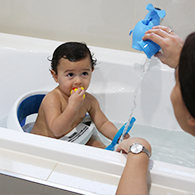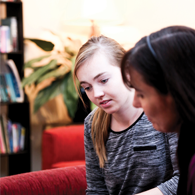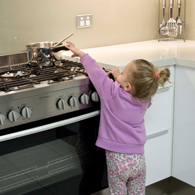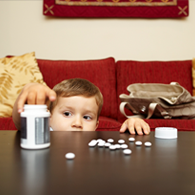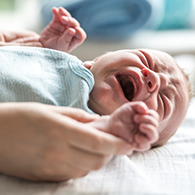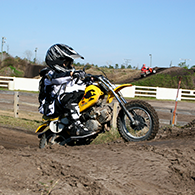Water safety in the bath
Bath time is a great way for babies and young children to learn water awareness. However the bath is also a common place for drowning at home.
Drowning in the bath usually happens when the adult caregiver is distracted or leaves the room to do something else. Children can drown quickly in just a few centimetres of water.
Follow these bath drowning prevention tips: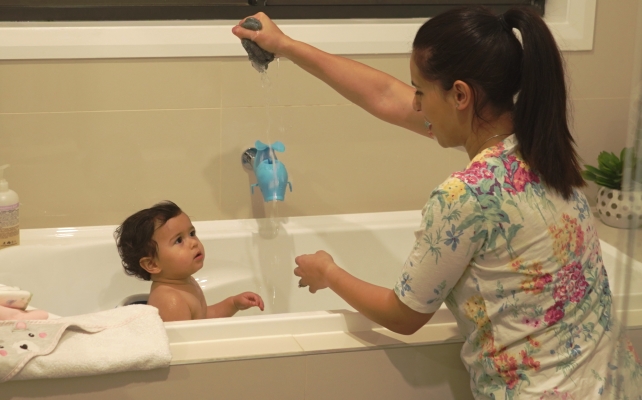
- Take everything you need, such as a towel, face washer, bath wash, clothes and nappy into the bathroom, so you can stay with your child for bath time
- make sure the bath surface is clean so that your child doesn’t slip
- Don’t put too much water in the bath, just enough for washing and play
- Always stay within arms’ reach of your child in the bath
- Ignore distractions such as mobile phones, answering the door or house work
- Never leave your child alone in the bath for any reason
- If you need to leave the bathroom for any reason, take your child with you or ask another responsible adult to supervise your child
- Don't rely on older siblings or teenagers to supervise younger children
- Use a non-slip bath mat
- If you use a baby bath aid or seat, stay with your child as they are not a safety device. Children can fall into the water if they slip out of the bath seat, if it tips over or while trying to climb out of the bath aid or seat. More information on baby bath aids is available from Product Safety Australia
- Empty the bath water as soon as you’re finished using the bath and close the bathroom door.
For steps on how to bathe your newborn or baby, visit the Raising Children Network website.
Knowing how to do cardio-pulmonary resuscitation (CPR) is an important skill for everyone. CPR Training for Parents is a free online course to teach the steps involved in CPR for babies and children. Keep a CPR chart somewhere visible in your home.
Baby bath aids
Baby bath aids include products such as baby bath supports, seats, cradles, hammocks, recliners, standing chairs, flotation rings and bath accessories. While they may look like a good idea, they are not recommended.
The best way to bathe a baby or child is holding them or within arm’s reach for older children. If you choose to use a bath support for your child, never leave your child alone in the bath support.
If buying or using a baby bath aid, check:
- the age and weight of the child that the product is recommended for
- the assembly instructions, instructions for use and warnings and follow them carefully
- for any broken or worn parts before using it. If it is old or second hand, it might not meet the current Australian mandatory product standard
- that the baby bath seat suction cups work properly. If the bath has an uneven, slip-resistant or textured base or if the coating is worn away, the suction cups will not stick to the bath surface
- that the bath surface is clean so the suction cups work properly
- for recalled products that have caused deaths or injuries or don’t meet the standard. Do not use any recalled product
- that children are always actively supervised within arm’s reach when in, on or around water.

